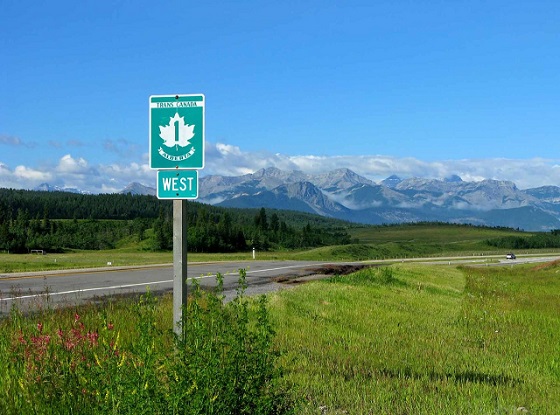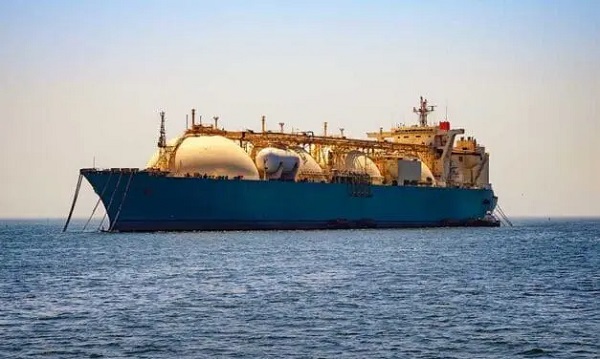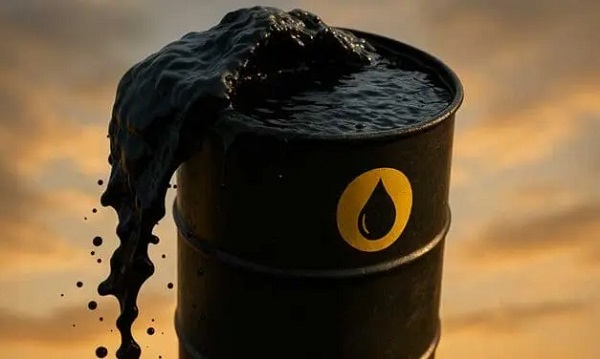Energy
What doubling the grid really means

From the Frontier Centre for Public Policy
” imagine if someone said in the next 25 years and 11 months, we must twin every single freeway, highway, grid road, street and alleyway, across the entire country, at the same time. And along the way, we have to replace up to 89 per cent of the existing infrastructure, as well, because it is no longer considered adequate “
Recently my daughter called me while on her way back from a Costco run in Regina, heading home to Weyburn.
She noted that it appears they are twinning the highway between Regina and Weyburn. Indeed, they are, I explained. And several years later, they’ll probably get it all the way to Weyburn. Maybe by the time I retire, if I live that long, they’ll get as far as Estevan.
Indeed, those timelines are likely pretty close to reality, if the twinning of Highway 16, from Saskatoon to Lloydminster, was any indication. I used to drive from Saskatoon to North Battleford to get the newspaper I was working for printed, with road construction for much of that. And it took several more years to complete the Battlefords to Lloydminster portion. I was fortunate enough to be present at the ceremony for that. It was significant enough that Premier Lorne Calvert came out.
Twinning a major highway is a substantial undertaking. Historically, Saskatchewan could usually only afford to work on three separate areas at a time, typically doing 20 kilometres per year in each stretch. That was all the provincial finances could handle.
By adding an additional two lanes, you are effectively doubling the capacity of that major piece of infrastructure. It’s not easy, not cheap, and not fast.
Now imagine if someone said in the next 25 years and 11 months, we must twin every single freeway, highway, grid road, street and alleyway, across the entire country, at the same time. And along the way, we have to replace up to 89 per cent of the existing infrastructure, as well, because it is no longer considered adequate.
You’d probably think they were living in a dreamland, or quite possibly stark raving mad.
And yet this is precisely what the federal government is proposing, nay, demanding, of Canadians from St. Johns to Victoria to Tuktoyaktuk.
In order to save the world from anthropogenic (manmade climate change) and attain a “Net Zero by 2050” economy, we must increase the size of the electrical grid by a factor of 2.5x. And for Saskatchewan and Alberta, who on any given day get up to 88 and 94 per cent of their power, respectively, from fossil fuels, they must also replace that existing gas and coal power generation with non-emitting sources, at the same time as they’re building out the truly massive expansion.
The first reference I saw of the federal Liberal government’s intentions of this was in the 2023 budget, which noted expanding the electrical grid by a factor of 2.2 to 3.4 times. By August, when they released the proposed Clean Electricity Regulations, the government seemed to settle on a factor of 2.5 times for the high demand scenario.
So in the highway twinning example, that would be adding three lanes, not two, to every two lane highway, grid road, street and alleyway. For an existing four lane highway, you would need to add six lanes. For a six lane freeway like Ontario’s 401, you’d need to add an additional nine lanes, finding the right of way space, concrete, rebar, gravel, and asphalt for all of this. Again, all at the same time, in 25 years and 11 months.
There are several thrusts that the federal government is pushing. First, by 2035, they want to totally eliminate gasoline and diesel from new light vehicle sales. There’s currently only eight retail hydrogen fueling stations listed by the federal government and Shell in the entire country. There could be more, but they’re not listed. Realistically this means battery-powered electric vehicles (EVs). But nearly all of those EVs will require charging at home each night (and especially during winter, pre-conditioning those batteries, keeping them warm).
So every residence in the country will require 30 amp chargers for cars, and 80 amp chargers for pickups.
But the government is also now moving away from fossil fuels for home, heating, too. This was indicative of Prime Minister Justin Trudeau’s pause on the carbon tax for home heating oil (primarily used in Atlantic Canada, although I grew up in a house with that system). To do so, the feds are offering “free” installations of heat pumps (which are wholly inadequate at -30 temperatures, let alone the -44 seen in Alberta in mid-January). And those could be up to another 50 amps, per heat pump.
And that’s just residential, never mind commercial or industrial.
The Clean Electricity Regulations are meant to force fossil fuel power generation to go away. And since wind frequently drops to nothing, and the sun goes down every day, the only real alternative is massive expansion of nuclear power across Canada. We’re talking small modular reactors by the dozen in Alberta, Saskatchewan, and to a lesser extent, Nova Scotia and New Brunswick.
On Jan. 30, SaskPower announced a formalized agreement with General Electric-Hitachi for small modular reactors. But when I asked how many they plan on building, the CEO wouldn’t say. But he did speak of increasing the provincial grid from 5,400 megawatt now to 13,000 to 15,000 megawatts.
Hydro Quebec just released their plans to double their grid. Yet, perhaps miraculously, they’re not saying how many, if any, new dams will need to be built.
This doubling of the grid (actually 2.5x, but that’s not easy to say), means we’re going to need not only additional generation, but transmission lines, distribution lines, back alley pedestals, and wiring to every home, business and factory in the country. Where the materials come from? The contractors and workers? Will Not In My Back Yard (NIMBY) be universally trampled on by eminent domain orders, for the good of the planet? Or will it be a continuation of Build Absolutely Nothing Anywhere Near Anything Syndrome (BANANAS)?
A very real example is the Trans Mountain Pipeline. The original was built in something like 16 months, from scratching dirt to oil flowing. The expansion is taking a hell of a lot longer. Work started in 2018, and it is still not done. Any change in the plan had to go back to the Canadian Energy Regulator. Some First Nations fought it every step of the way.
Now do this for every single piece of existing power infrastructure. Wrap your head around that for a minute.
This supposed energy transition, from fossil fuels to electric everything, does not work if you cannot build out the electrical infrastructure, everywhere, and essentially all at in the next 25 years and 11 months. Either the timelines need to be stretched to a generational scale, or more realistically, the whole concept needs to be entirely rethought.
As Saskatchewan Premier Scott Moe has said more than once, “We will not attempt the impossible when it comes to power production.”
Brian Zinchuk is editor and owner of Pipeline Online, and occasional contributor to the Frontier Centre for Public Policy. He can be reached at [email protected].
Energy
Canada’s LNG breakthrough must be just the beginning

This article supplied by Troy Media.
 By Lisa Baiton
By Lisa Baiton
Without decisive action, Canada risks missing out on a generational opportunity
For decades, Canada has relied almost exclusively on the United States to buy our natural gas exports. We are one of the world’s top natural gas exporters, selling nearly half of our total natural gas production each year, but about 99 percent of those exports go to a single customer south of
our border.
This trading relationship has been reliable, even though it has meant selling our natural gas at a lower price. But things are changing.
A good business has more than one customer, and over the past decade our biggest customer has become the largest Liquefied Natural Gas (LNG) exporter on the planet.
But Canada has taken a major step forward. LNG Canada’s first shipment to international markets marks a historic breakthrough—it’s the country’s largest private investment and puts Canada on the map as a global supplier of LNG.
This achievement deserves celebration. It demonstrates that Canada can build and deliver major energy infrastructure, unlocking economic opportunities for Indigenous Nations, British Columbians, and Canadians across the country. Just as the TransMountain pipeline expansion diversified our global customer base boosted our GDP, and enabled production growth, LNG exports can do for our natural gas sector. Natural gas royalties from LNG Canada alone are projected to contribute $23 billion to British Columbia’s government over its 40-year lifespan. Building a facility of similar scale to LNG Canada is estimated to create over 35,000 jobs during construction and add up to $4.5 billion to our national GDP annually. It’s a glimpse of what’s possible.
But we can’t stop here.
Without decisive action to scale up LNG, Canada risks missing out on a generational opportunity to secure economic sovereignty and meet rising global energy demand.
Global demand for LNG is surging. Shell forecasts a 60 per cent increase by 2040, driven by Asian economic growth, the decarbonization of heavy industry and transport, and new energy demands from artificial intelligence. Most G7 leaders have called for a full ban on Russian energy imports, and countries around the world are actively seeking secure, stable suppliers. Canada, as the fourth-largest oil producer and fifth-largest natural gas producer, is well-positioned to help fill that gap.
So why haven’t we? Despite our resource wealth, Canada lags on infrastructure and policy. While others sprint for global contracts, we’re stuck in red tape. Our permitting system is slow, uncertain, and hostile to investment. That must change.
The government’s two-year approval target is a step forward, as is the recent work our Prime Minister and Energy Minister Hodgson are doing to promote energy trade in Poland and Germany, including LNG. But deeper reforms are needed to create a clear, competitive, investor-friendly system that accelerates development.
We must also prioritize infrastructure investment. With strategic investments in pipelines, LNG terminals, and port capacity, we can connect our vast natural gas reserves to highdemand markets across Asia, Europe, and beyond.
Equally crucial is diversification. The U.S. will remain a vital customer, but relying on one market is no longer tenable. Japan, Europe, and emerging Asian economies are actively seeking partners—and Canada must be ready to meet them with reliable supplies and long-term contracts.
Indigenous participation will be key to success. Canada’s emerging LNG export industry is demonstrating what’s possible with the Haisla Nation’s Cedar LNG, the world’s first Indigenous majority-owned LNG project, along with Woodfibre LNG being advanced in partnership with the Squamish Nation, and Ksi Lisims LNG being co-developed with the Nisga’a Nation. Expanding the LNG sector offers an opportunity to advance reconciliation meaningfully, through ownership, jobs, and long-term prosperity.
This is a pivotal moment. The first phase of LNG Canada must be just the start. The world needs our energy. It’s time to deliver.
Lisa Baiton is the president and CEO of the Canadian Association of Petroleum Producers
Troy Media empowers Canadian community news outlets by providing independent, insightful analysis and commentary. Our mission is to support local media in helping Canadians stay informed and engaged by delivering reliable content that strengthens community connections and deepens understanding across the country.
Alberta
OPEC+ chooses market share over stability, and Canada will pay

This article supplied by Troy Media.
OPEC+ output hike could sink prices, blow an even bigger hole in Alberta’s budget and drag Canada’s economy down with it
OPEC and its allies are flooding the global oil market again, betting that regaining lost market share is worth the risk of triggering a price collapse.
On Sept. 7, eight of its leading members agreed to boost production by 137,000 barrels per day beginning in October. That move, taken more than a year ahead of schedule, marks the start of a second major unwind of previous output cuts, even as warnings of a supply glut grow. OPEC+, a coalition led by Saudi Arabia and Russia, coordinates oil production targets in an effort to influence global pricing.
This isn’t oil politics in a vacuum. It’s a direct blow to Alberta’s finances, and a growing threat to Canada’s economic stability.
Canada’s broader economy depends heavily on a strong oil and gas sector, but no province is more directly reliant on resource royalties than Alberta, where oil revenues fund everything from hospitals to schools.
The province is already forecasting a $6.5-billion deficit by spring. A further slide in oil prices would deepen that gap, threatening everything from vital programs to jobs. Every drop in the benchmark West Texas Intermediate price, currently averaging around US$64, is estimated to wipe out another $750 million in annual revenue.
When Alberta’s finances falter, the ripple effects spread across the country. Equalization transfers from Ottawa to have-not provinces decline. Private investment dries up. Energy-sector jobs vanish not just in Alberta, but in supplier and service industries nationwide. Even the Canadian dollar takes a hit, reflecting reduced confidence in one of the country’s key economic engines. When Alberta stumbles, Canada’s broader economic momentum slows with it.
The timing couldn’t be crueller. October marks the end of the summer driving season, typically a lull for fuel demand. Yet extra supply is about to hit a market already leaning bearish. Oil prices have dropped roughly 15 per cent this year; Brent crude is treading just above US$65, still well beneath April’s lows.
But OPEC+ isn’t alone in raising the taps. Non-OPEC producers in Brazil, Canada, Guyana and Norway are all increasing production. The International Energy Agency warns global supply could exceed demand by as much as 500,000 barrels per day.
The market is bracing for a sustained price war. Alberta is staring down the barrel.
OPEC+ claims it’s playing the long game to reclaim market share. But gambling on long-term gains at the cost of short-term pain is reckless, especially for Alberta. The province faces immediate financial consequences: revenue losses, tougher budget decisions and diminished policy flexibility.
To make matters worse, U.S. forecasts are underwhelming, with an unexpected 2.4-million-barrel build in inventories. U.S. production remains at record highs above 13.5 million barrels per day, and refinery margins are shrinking. The signal is clear: demand isn’t coming back fast enough to absorb growing supply.
OPEC+ may think it’s posturing strategically. But for Canada, starting with Alberta, the fallout is real and immediate. It’s not just a market turn. It’s a warning blast. And the consequences? Jobs lost, public services cut and fiscal strain for months ahead.
Canada can’t direct OPEC. But it can brace for the fallout—and plan accordingly.
Toronto-based Rashid Husain Syed is a highly regarded analyst specializing in energy and politics, particularly in the Middle East. In addition to his contributions to local and international newspapers, Rashid frequently lends his expertise as a speaker at global conferences. Organizations such as the Department of Energy in Washington and the International Energy Agency in Paris have sought his insights on global energy matters.
Troy Media empowers Canadian community news outlets by providing independent, insightful analysis and commentary. Our mission is to support local media in helping Canadians stay informed and engaged by delivering reliable content that strengthens community connections and deepens understanding across the country
-

 Censorship Industrial Complex1 hour ago
Censorship Industrial Complex1 hour agoFreedom of speech under threat on university campuses in Canada
-

 Business1 hour ago
Business1 hour agoCarney engaging in Orwellian doublethink with federal budget rhetoric
-

 Energy1 hour ago
Energy1 hour agoCanada’s LNG breakthrough must be just the beginning
-

 Business2 hours ago
Business2 hours agoCourt’s ‘Aboriginal title’ ruling further damages B.C.’s investment climate
-

 Alberta2 days ago
Alberta2 days agoAlberta deserves a police force that actually reflects its values
-

 Crime2 days ago
Crime2 days agoCharlie Kirk Killer’s Ammo Reportedly Marked With Transgender, Anti-‘Fascist’ Messages
-

 Crime2 days ago
Crime2 days agoFormer FBI Agent Says Charlie Kirk Assassination May Have Been ‘A Professional Hit’
-

 Alberta2 days ago
Alberta2 days agoOPEC+ chooses market share over stability, and Canada will pay





